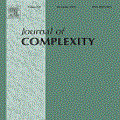Lattice rules are among the most prominently studied quasi-Monte Carlo methods to approximate multivariate integrals. A rank-$1$ lattice rule to approximate an $s$-dimensional integral is fully specified by its \emph{generating vector} $\boldsymbol{z} \in \mathbb{Z}^s$ and its number of points~$N$. While there are many results on the existence of ``good'' rank-$1$ lattice rules, there are no explicit constructions of good generating vectors for dimensions $s \ge 3$. This is why one usually resorts to computer search algorithms. In a recent paper by Ebert et al. in the Journal of Complexity, we showed a component-by-component digit-by-digit (CBC-DBD) construction for good generating vectors of rank-1 lattice rules for integration of functions in weighted Korobov classes. However, the result in that paper was limited to product weights. In the present paper, we shall generalize this result to arbitrary positive weights, thereby answering an open question posed in the paper of Ebert et al. We also include a short section on how the algorithm can be implemented in the case of POD weights, by which we see that the CBC-DBD construction is competitive with the classical CBC construction.
翻译:Lattice 规则是研究最为突出的多变量集成法之一。 普通使用计算机搜索算法的原因之一, Ebert 等人在《 复杂度杂志》最近发表的一篇论文中,我们展示了一种按一个组件逐个数位数计算(CBC-DBD)的构造, 用于生成一级至一级值的优质矢量规则, 用于将各种功能整合到加权的 Korobov 类中。 但是, 该文件的结果仅限于产品重量。 在本文中, 我们将这一结果概括为任意的正比重, 从而在《 复杂度杂志》 上, Ebert 等人最近发表的一篇论文中, 我们展示了一种按一个组件逐个数位数计算(CBC-DD) 的构造。 我们的CBC 标准构建中, 我们的C+BC 的正比重是多少。




